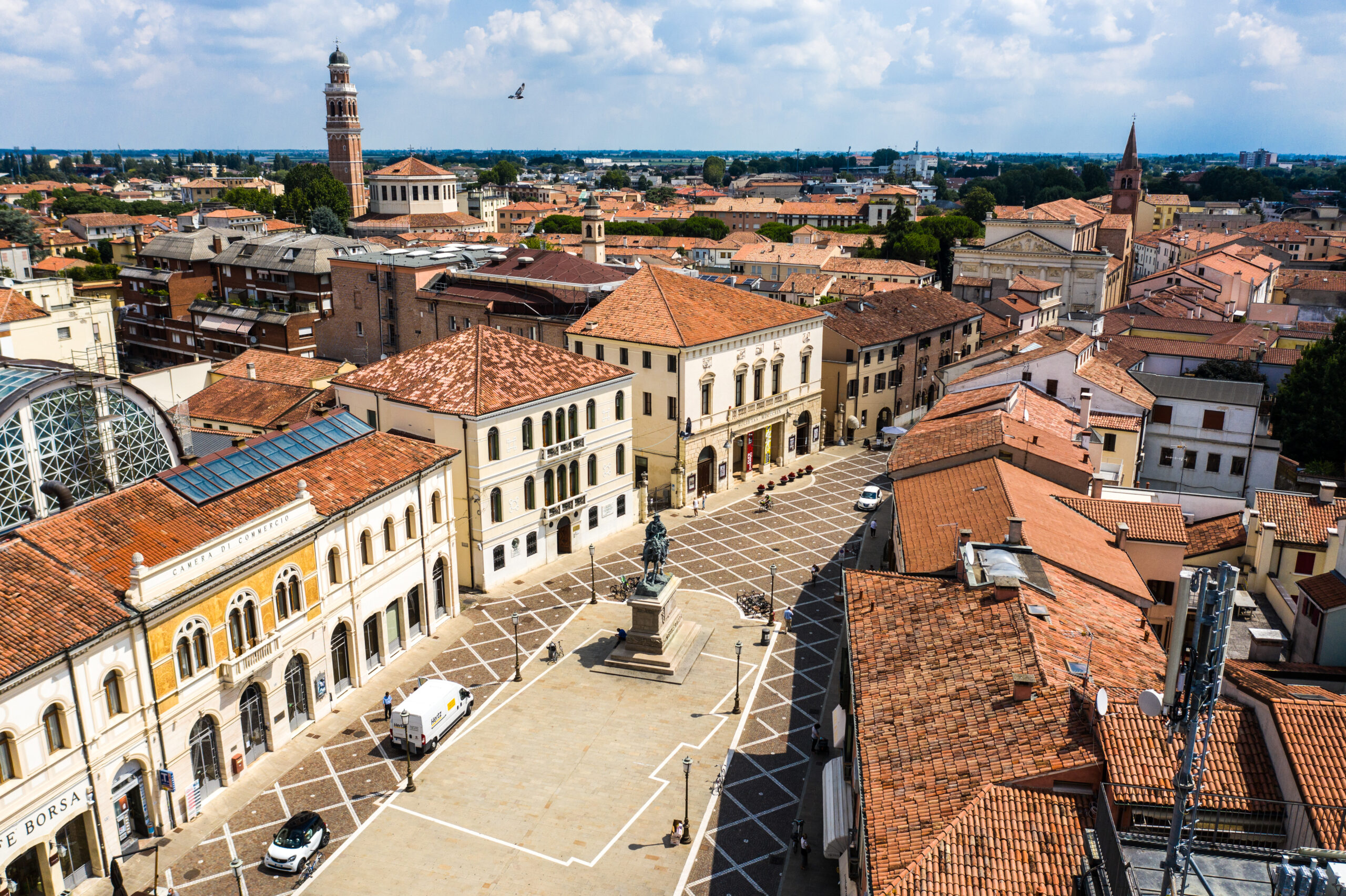
Rovigo
Rovigo is called the “City of roses” in memory of that verse from Orlando Furioso by Ludovico Ariosto, who defined it as the “land, whose production of roses gave it a pleasant name in Greek”.
The provincial capital is a city capable of surprising between history, nature and the meekness of its inhabitants.
In the past centuries it was a walled city and to understand this, it is enough to climb the Torre Donà, which together with Torre Grimani, are the emblem of the ancient medieval castle.
The historic center reflects the typical Venetian architecture between squares and arcades: Piazza Vittorio Emanuele, with important palaces and loggias such as the Civic Tower and the Loggia dei Nodari (seat of the Town Hall), Palazzo Roverella, Palazzo Roncale, Palazzo dell’Accademia dei Concordi, Palazzo della Gran Guardia and Piazza Garibaldi with Palazzo Pretorio, now the seat of the Chamber of Commerce and the Teatro Sociale.
There are many churches to discover, one of which is located in Piazza XX Settembre and is the Temple of the Beata Vergine del Soccorso, with an octagonal plan called “La Rotonda”, enhanced inside by a double pictorial cycle that leaves you speechless compared to the simplicity of the exterior.
Also not to be missed is the Olivetani Monastery, with its 13th century cloister and – located inside – the Museum of the Great Rivers, where it is possible to find evidence of the millenary history of these lands.
The last twenty years have seen many places come alive – throughout the year – by a succession of important art exhibitions and festivals: events that give added value to the city which, thanks to its small size, does not lose its characteristic trait of authenticity and tradition.
Finally, in addition to the cycle and pedestrian paths that allow you to visit the city on foot or by bicycle, Rovigo is also the starting point for the cycle path “La Via del Mare (I3)” and a stop on both the Cammino di Sant’Antonio and the Romea Germanica.